Crossed Paths -May Tree
This is the story of a 2 year old Hawthorn (May Tree). I bought it from a nursery, (no charming story to its beginning) and its journey up the M6 and A1 to Mary Dunn’s garden on Holy Island (Lindesfarne), Northumberland.
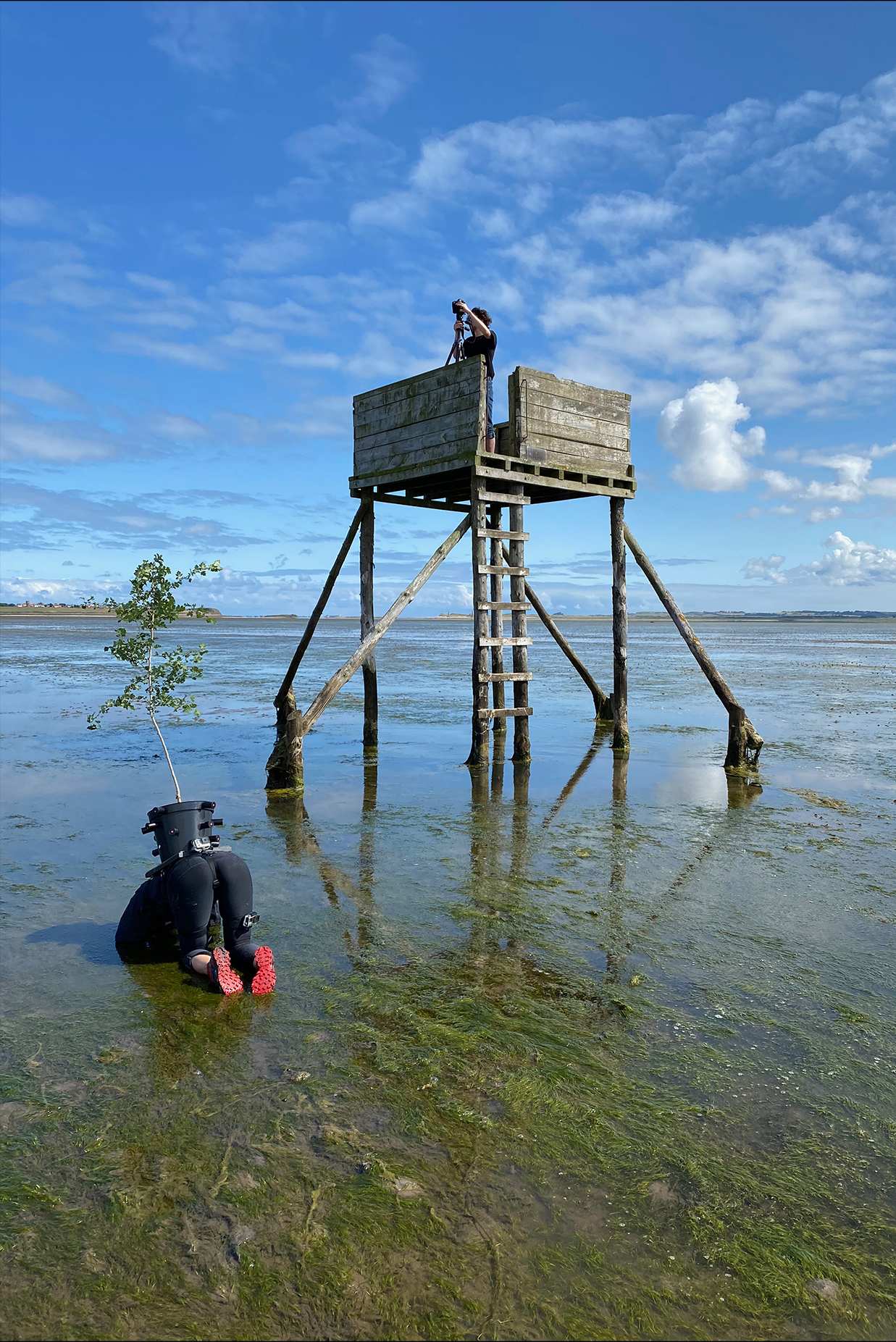
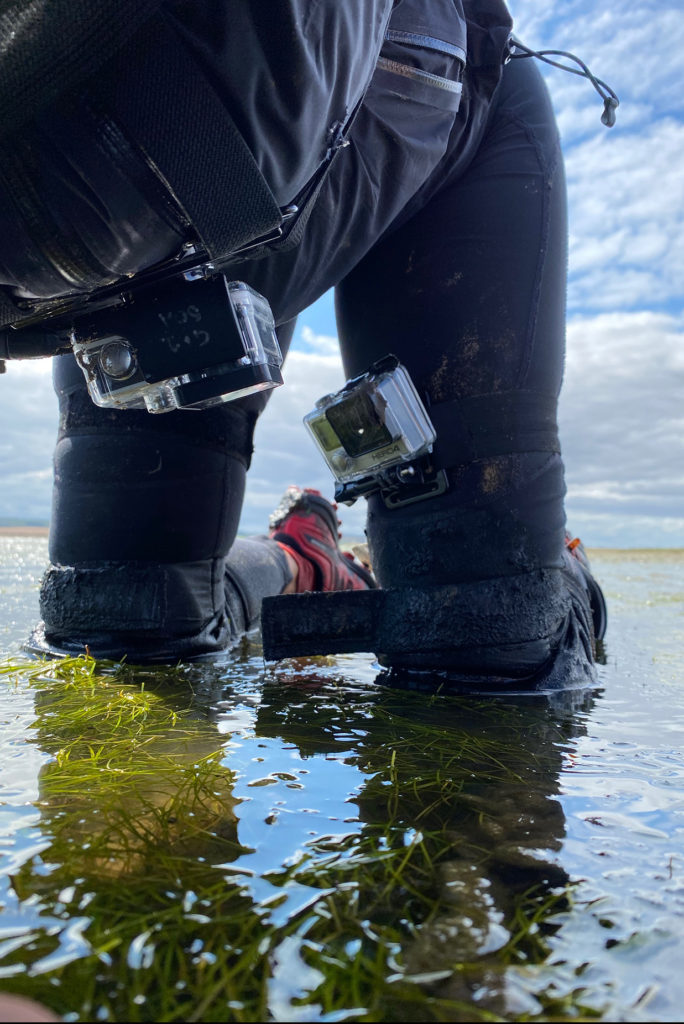
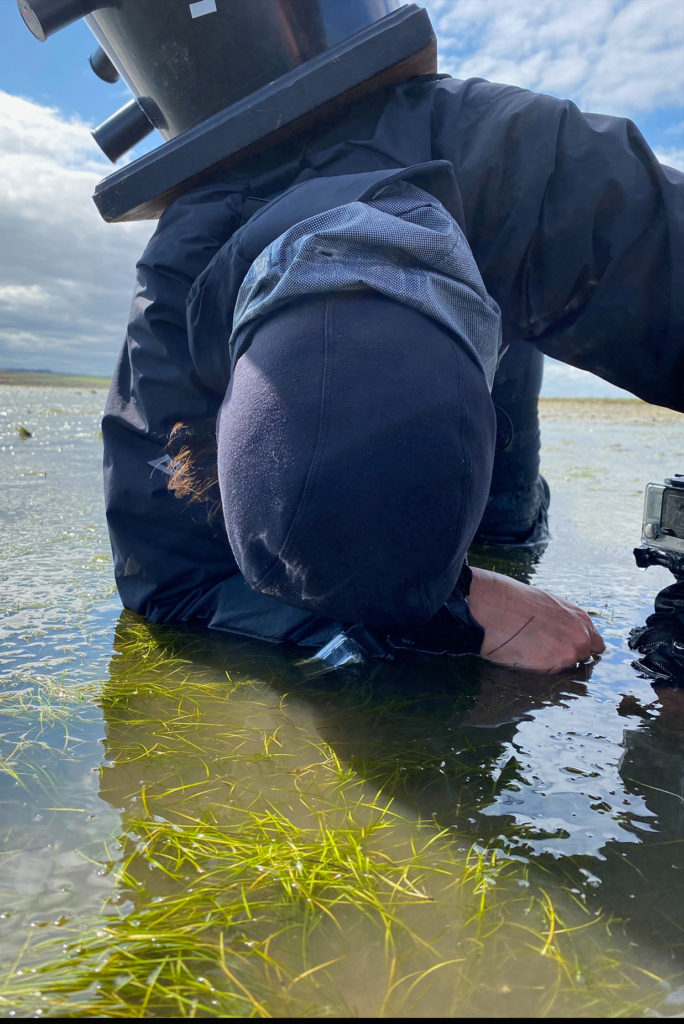
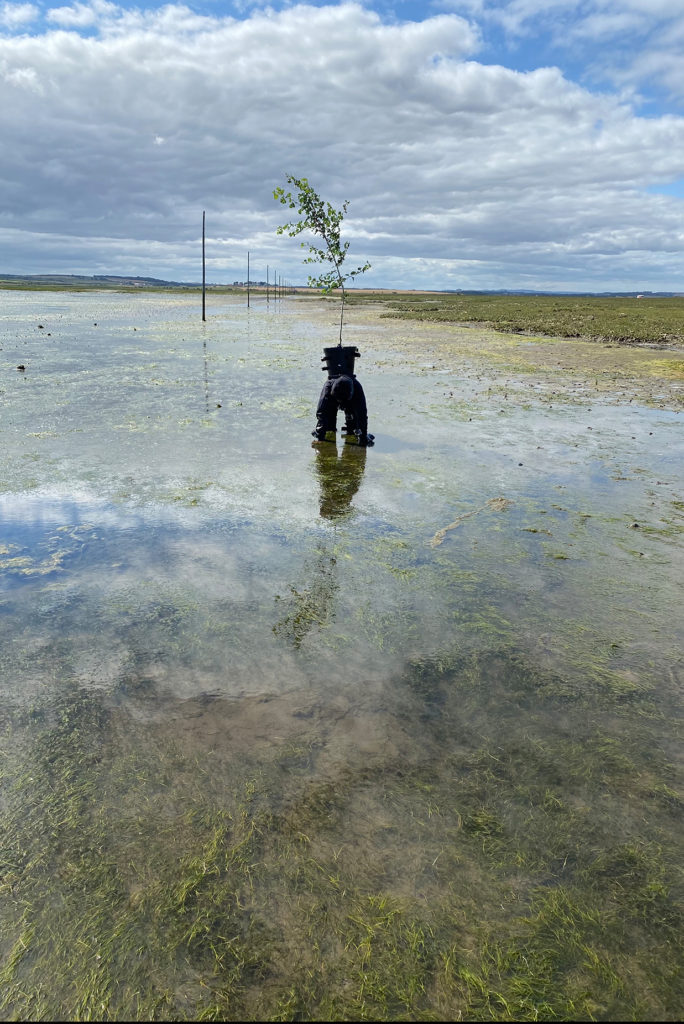
I get down, I can see sand, salt water, footprints, empty shells, lugworms, algae bloom, eel grass and sparkling sunlight. I know that beneath my fingers lurk buried vintage cars and perhaps the odd remaining land mine from WW11!.
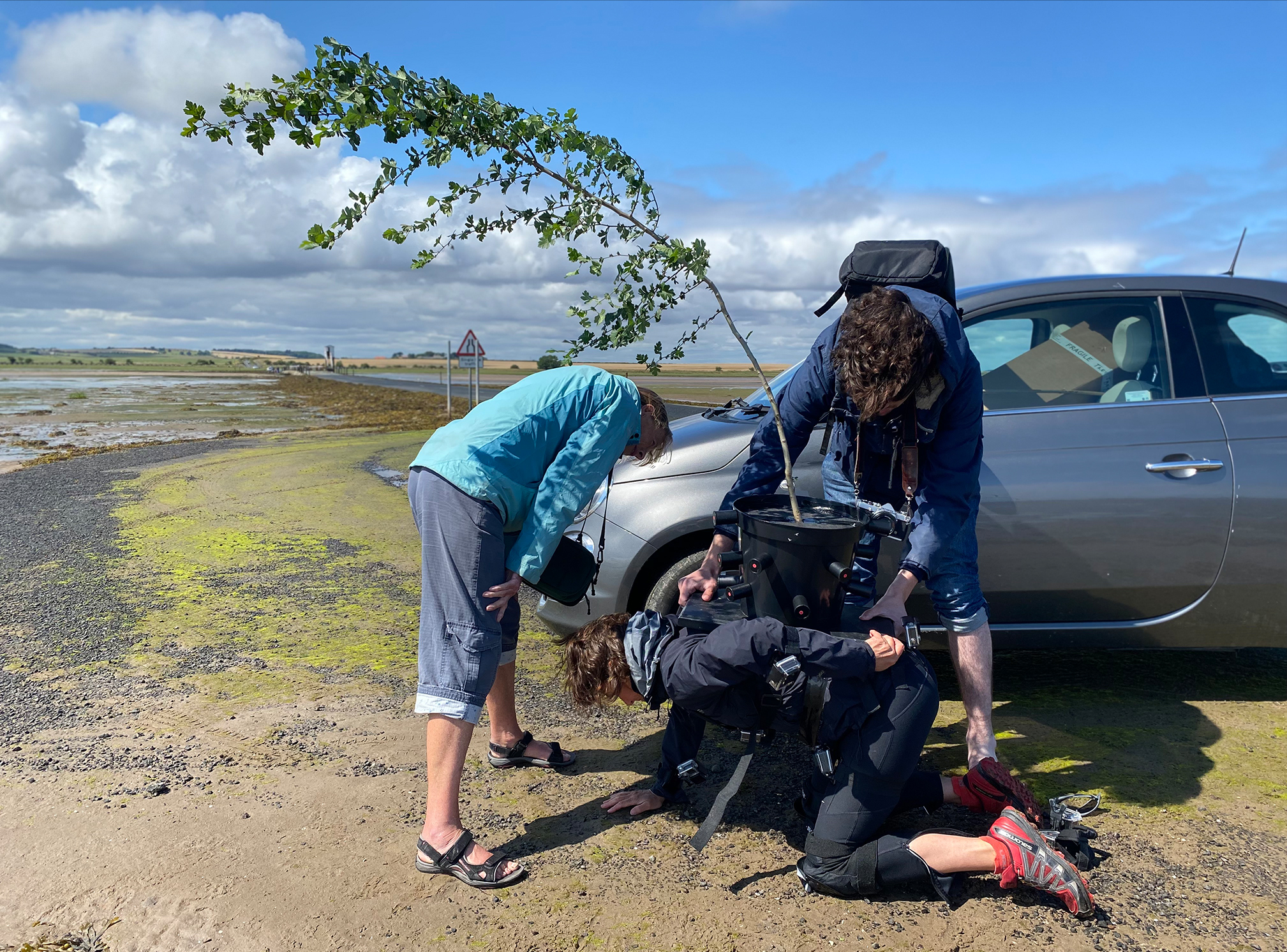
I am ready to go ‘in’..off we go…
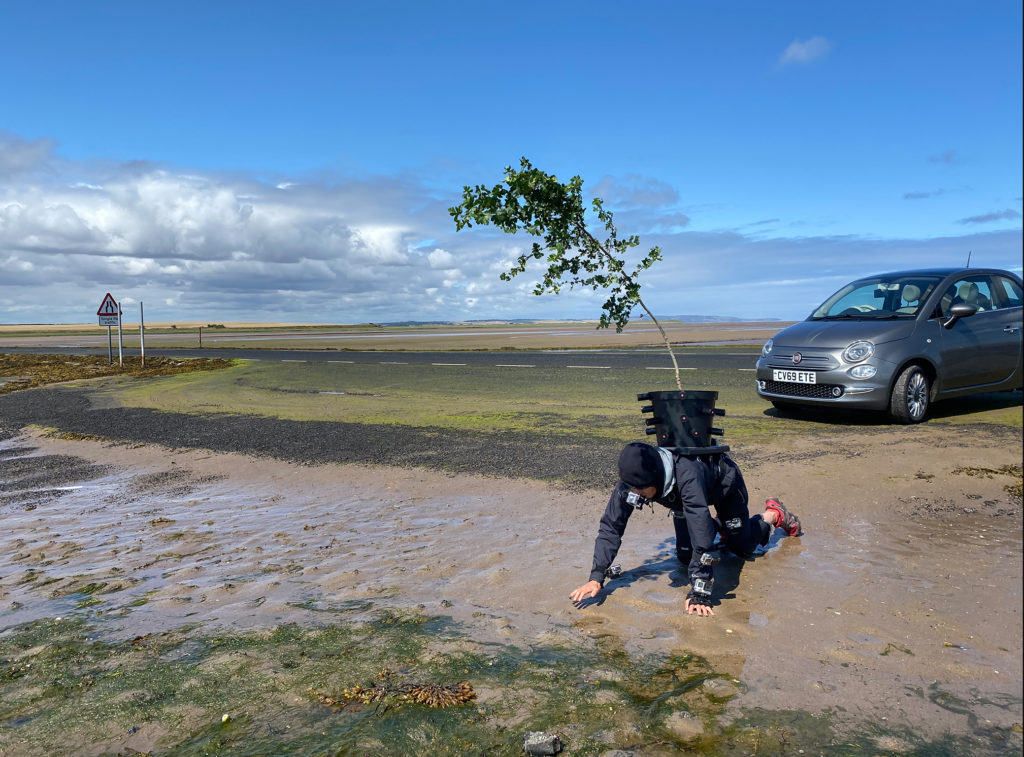
Knee step by hand step I go deeper ‘in’, I can sense the ghosts of century old cloaked pilgrims. I follow the back of Mary’s bare ankles and the bottom of the old barnacle crusted wooden posts. The water is warm, the sand is firm, the sea bed, virgin and naked, lays bare to the midday sunlight, reflecting fluffy white clouds and blue sky. Salty light flirts with the tree and my camera covered body, a lumbering disembodied black cyborg, our shadows dance together in the sand, morphing into something new.
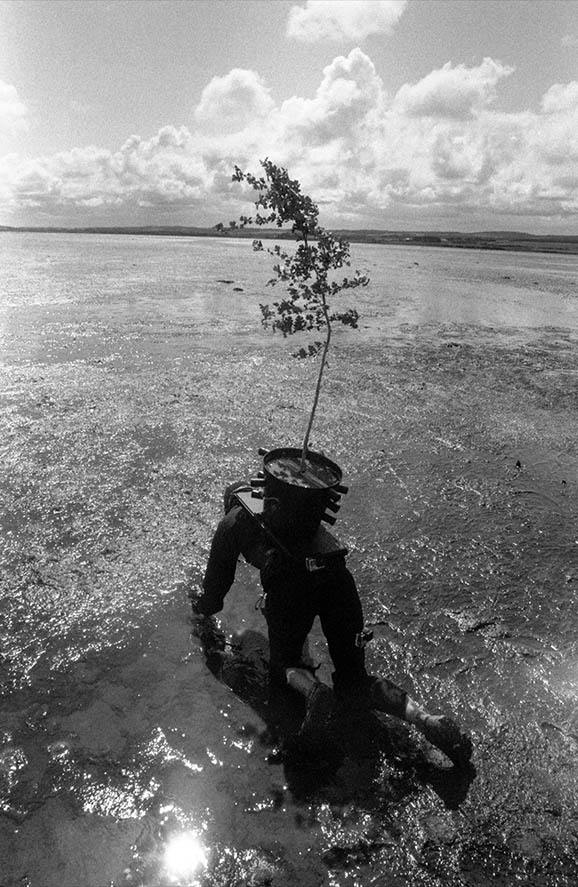
Crossed Paths – May Tree is one iteration of a larger crawling project centred on going deeply into the living landscape, ecosystems and interspecies dynamics to explore animal, plant, land and human narratives.
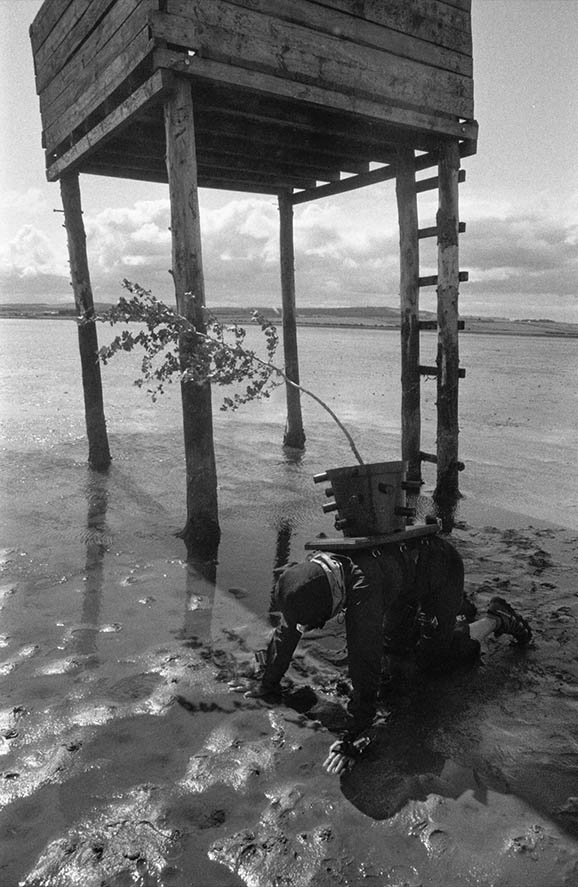
Crawling, one element of my art practice, is a tool for deep investigation of place and land, a powerful means of accessing, connecting and communicating the land, its matter, its inhabitants and its narratives.
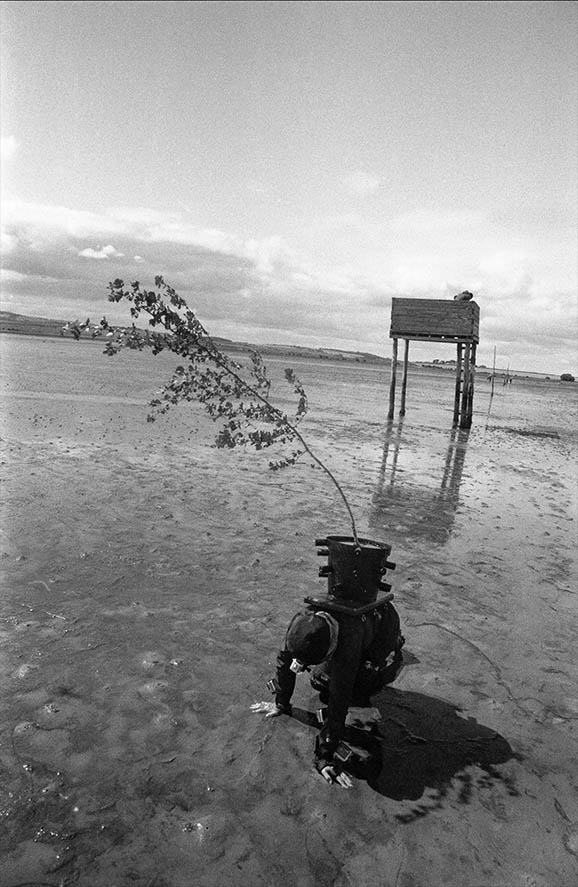
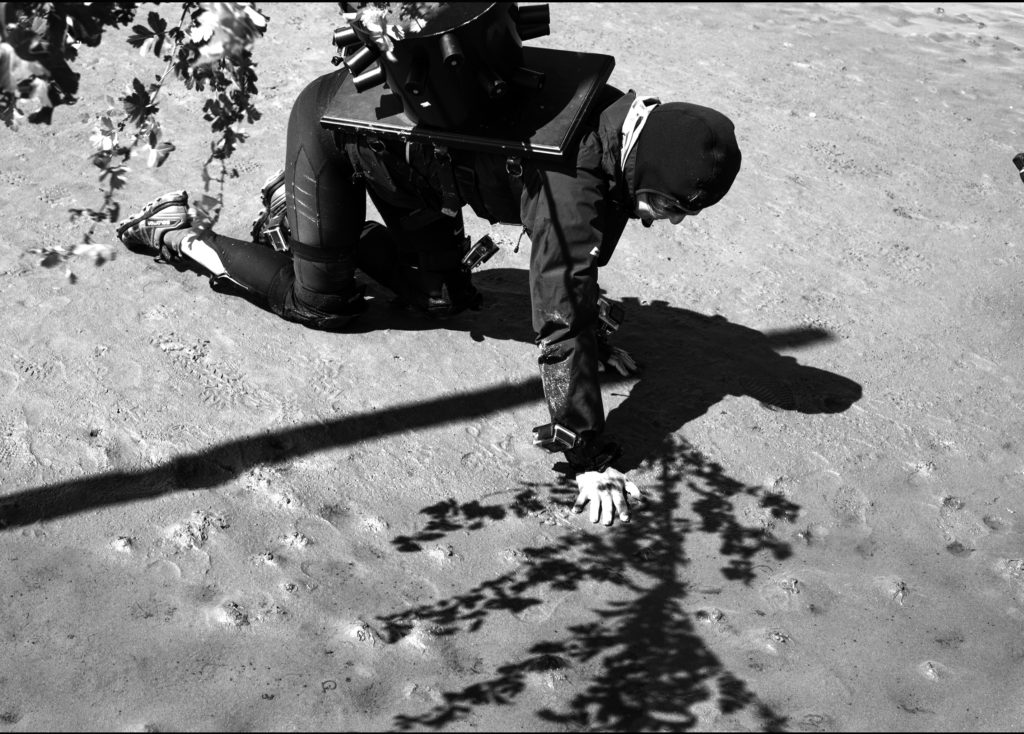
The shift from a two -legged to four -legged position is simple but profound. When closer to the ground I am more than human. I am closer to the matter, I am closer to what matters.
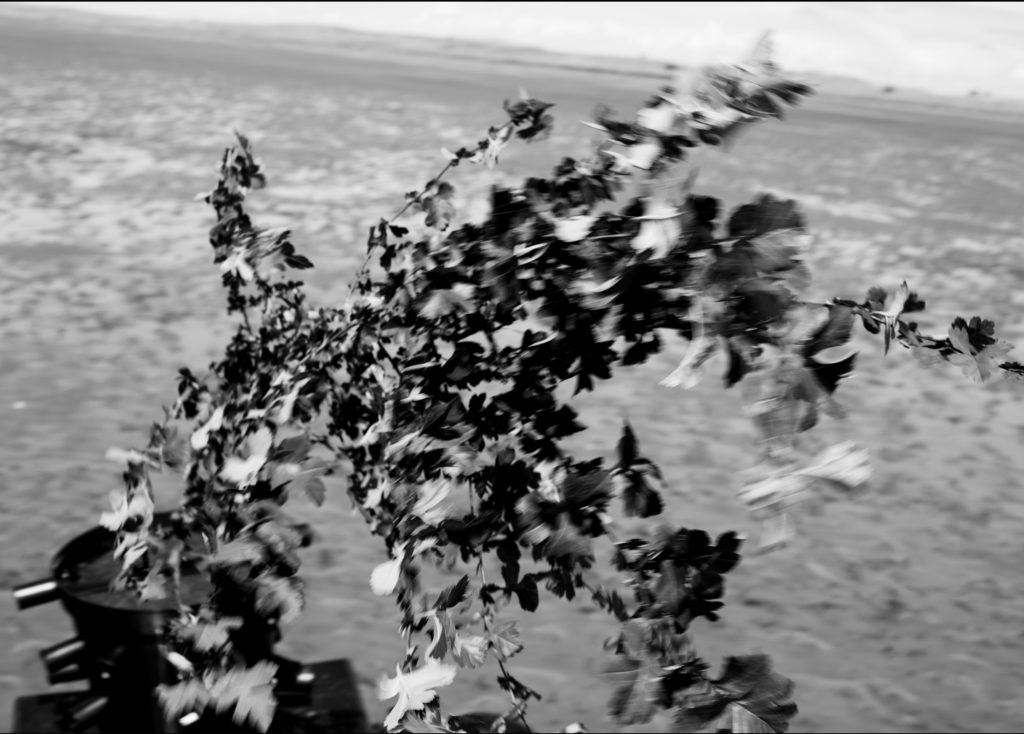
When down there I am neither here nor there, I am in between, I am free, I am feral, I am becoming…I am becoming May Tree.
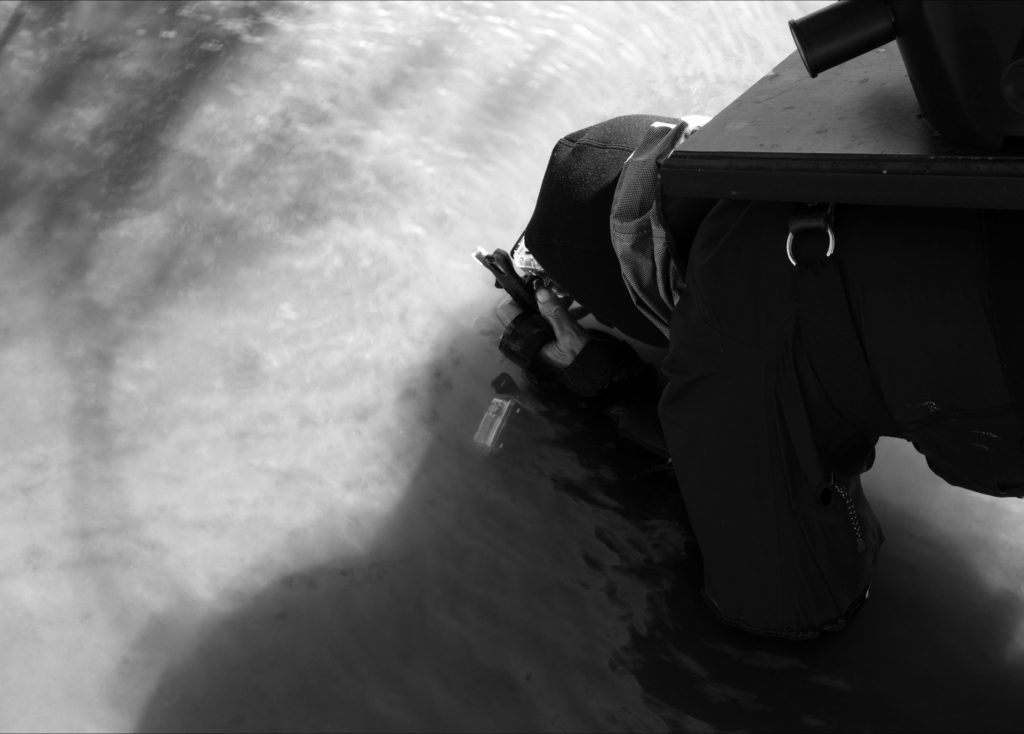
I am hybrid – tree and I, me and tree, we are animal and technology too. While the four of us temporarily co- exist a new non – hierarchical dynamic can occur. We encounter each other as though for the first time.
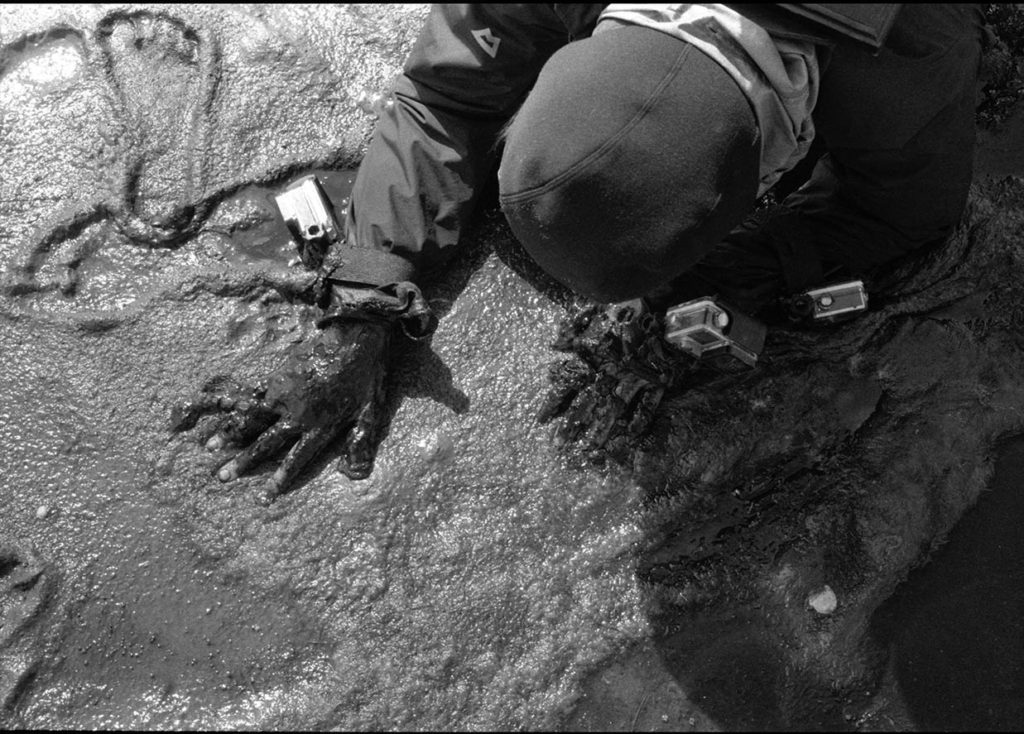
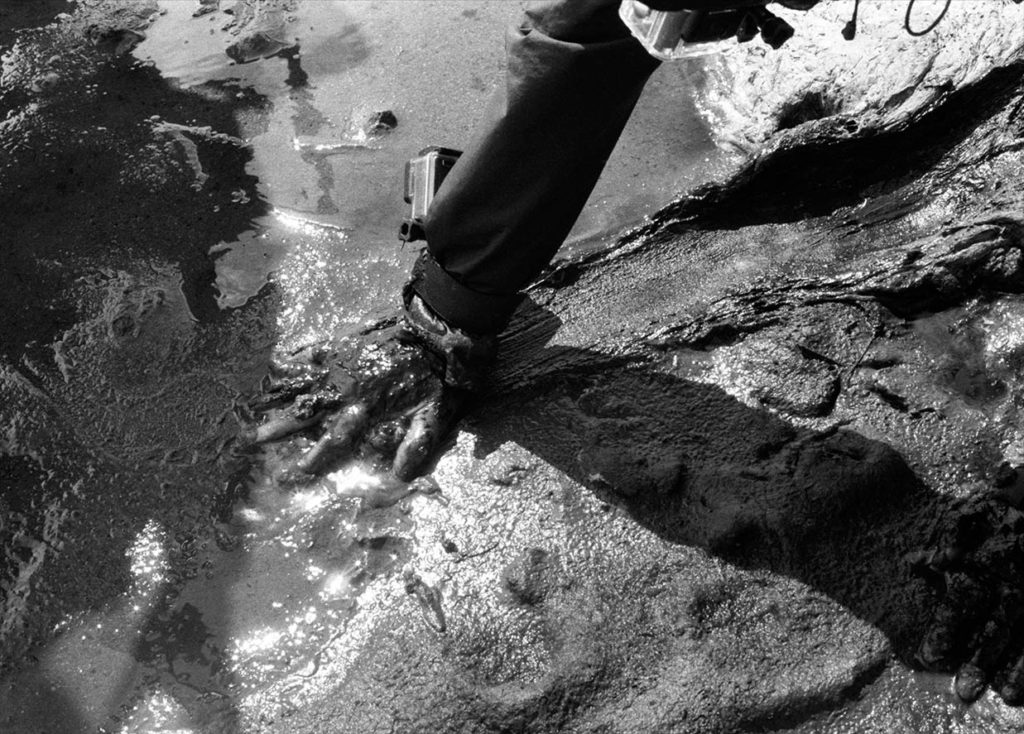
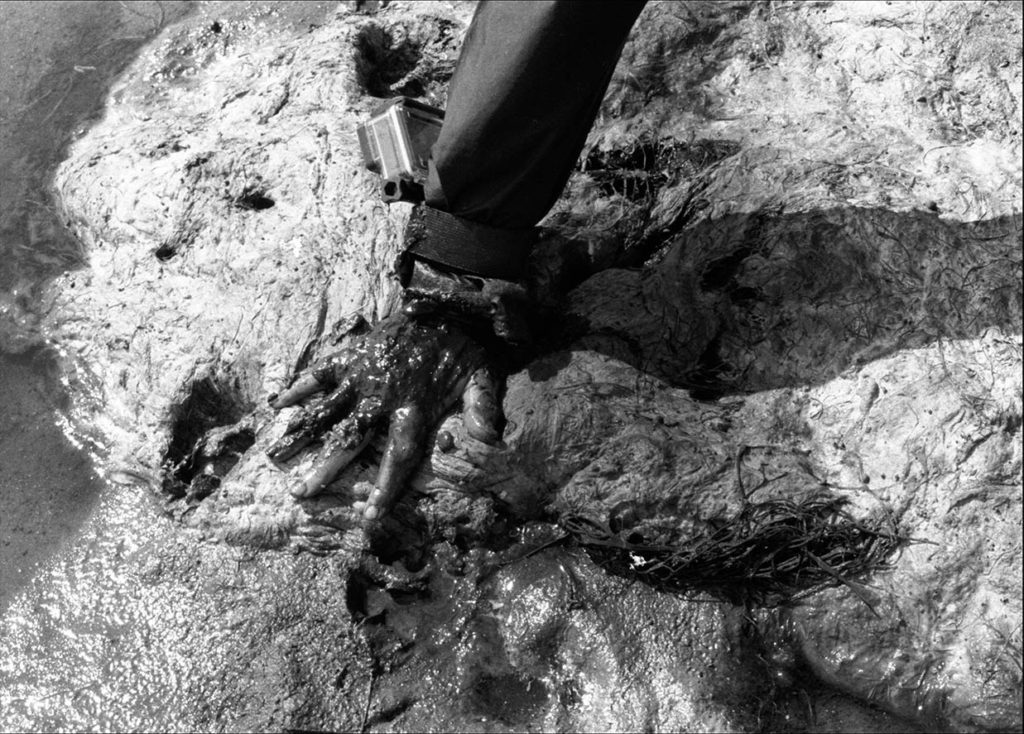
I crawled to Lindisfarne, along the ancient Pilgrims Way, an intertidal National Nature Reserve and Special Protection Area for birds, for 2 ½ hours across mud and sand flats with a potted 2 year old 3ft May tree on my back and 8 cameras on my body.
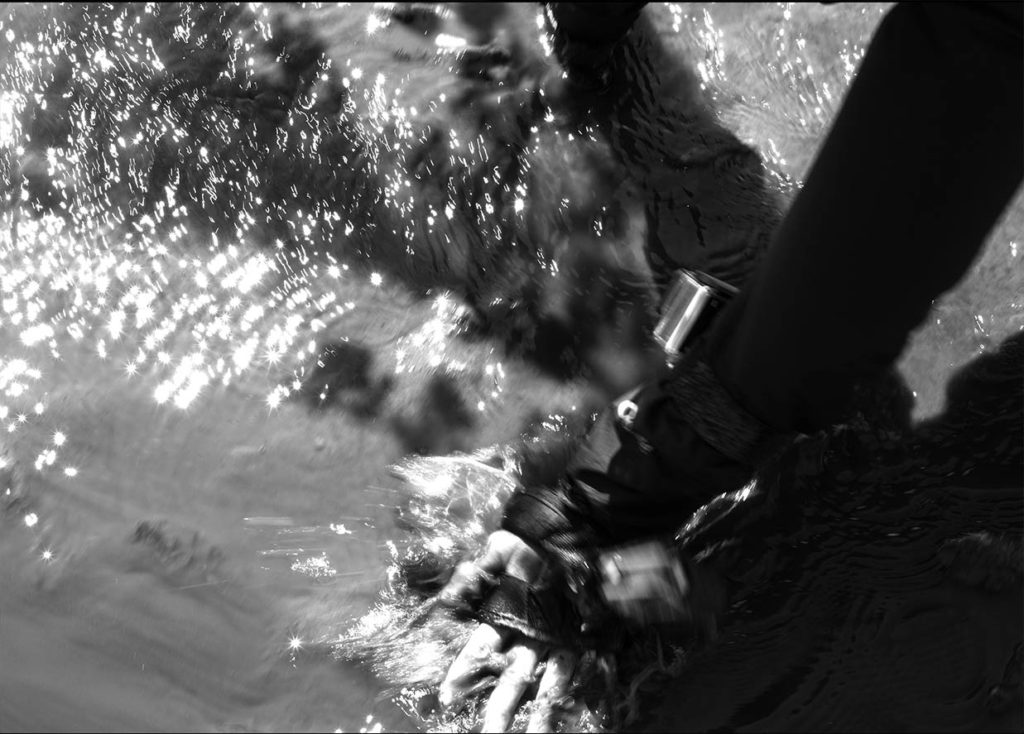
I transport my consciousness to the cameras on my body, my mouth, hands, legs, stomach, bum, back..the cameras are my body eyes, they can see what I have not seen before, or see in a new way what I have already seen.
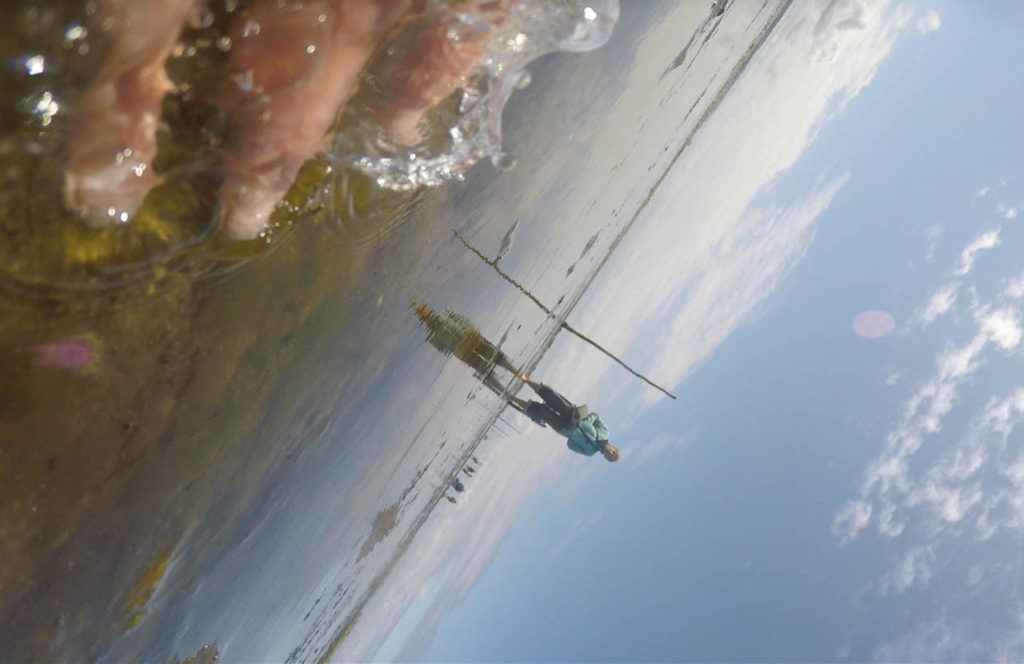
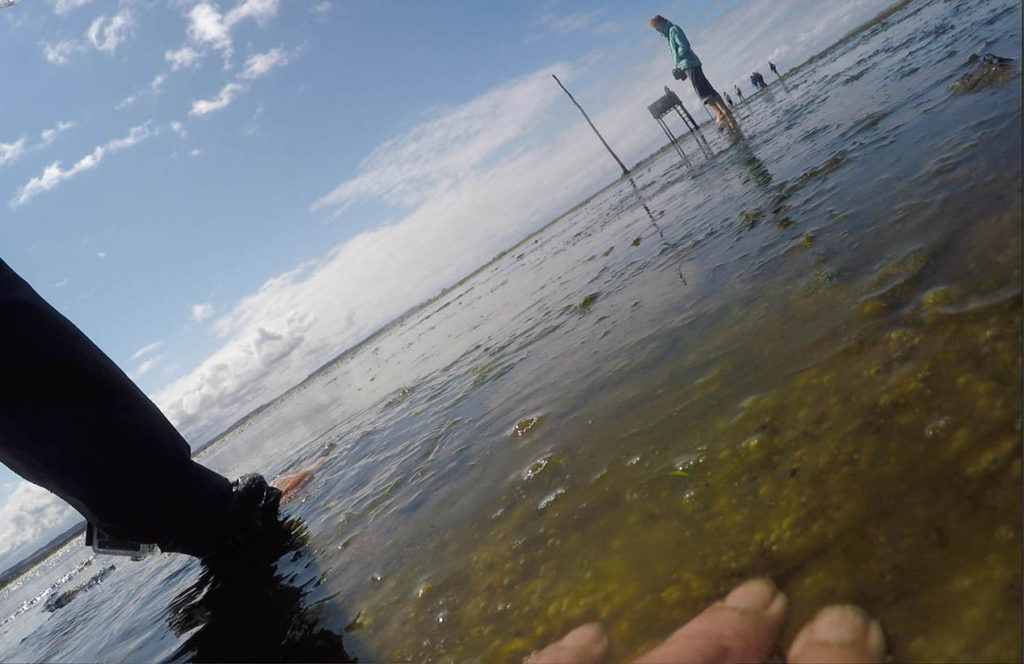
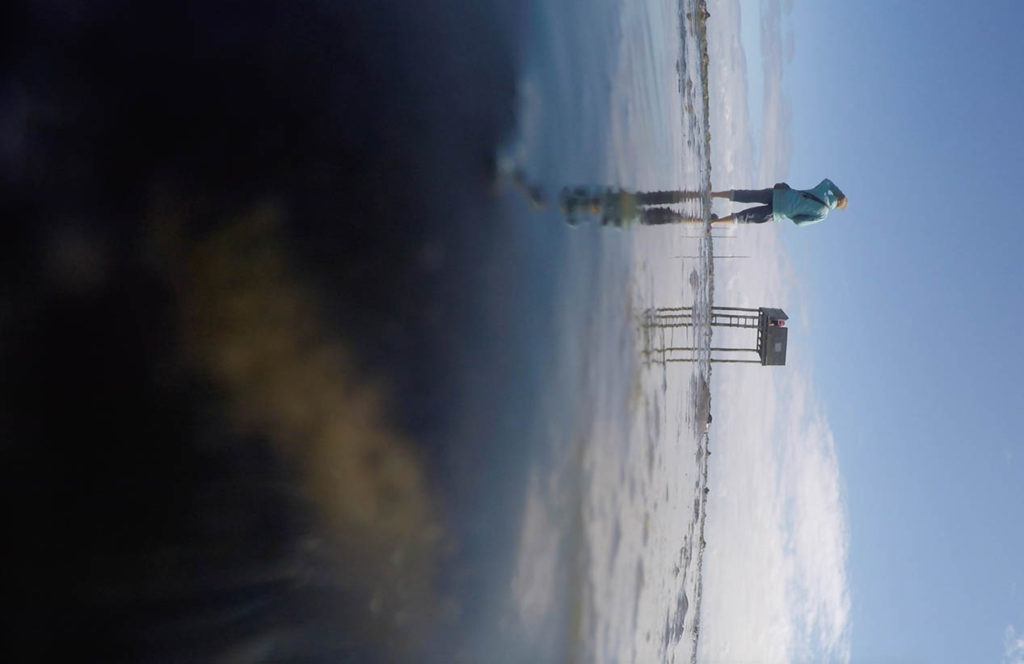
A crawling woman is vulnerable, awkward and embarrassing.
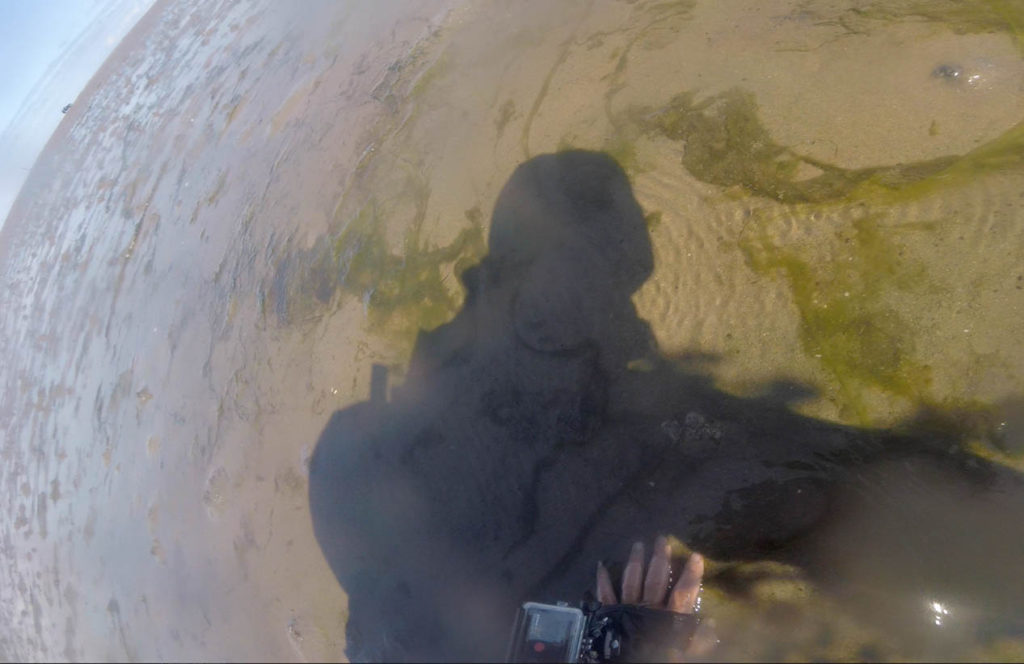
A crawling woman is powerful, absurd, poetic and provocative.
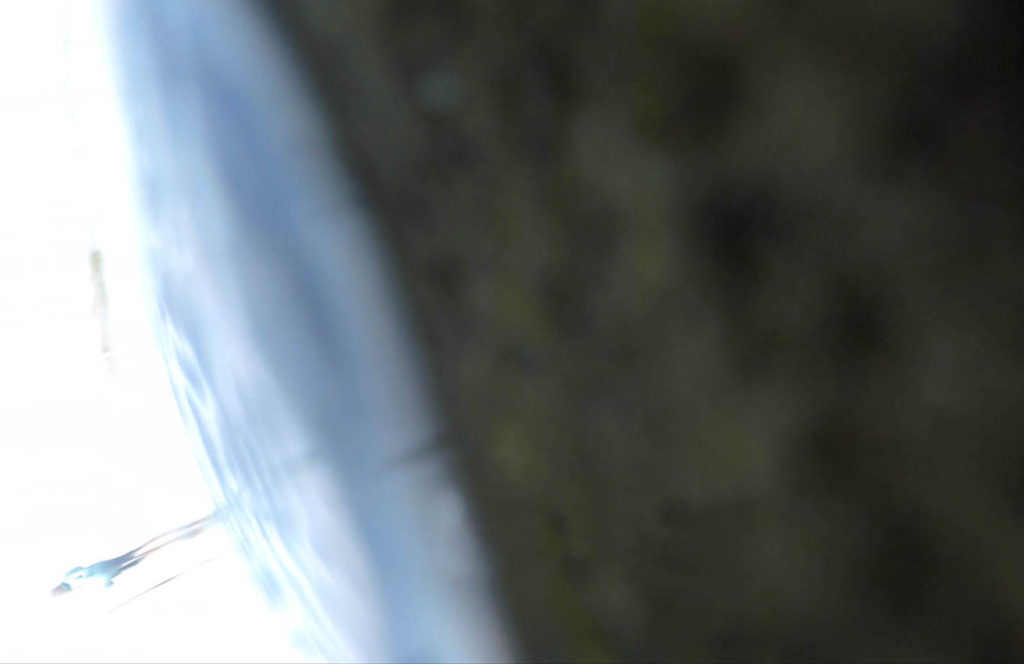
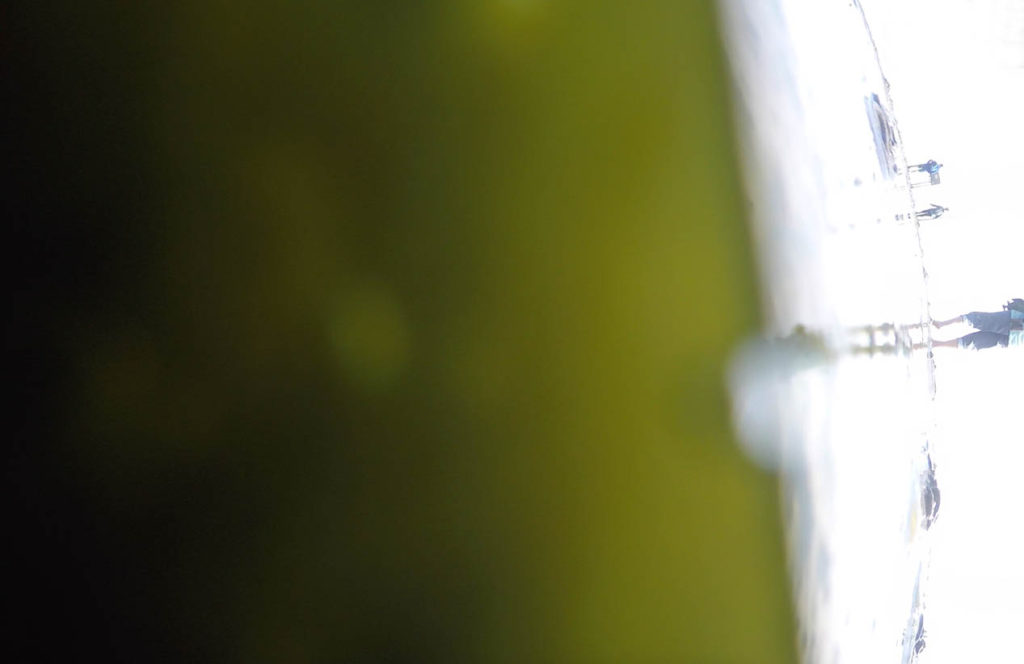
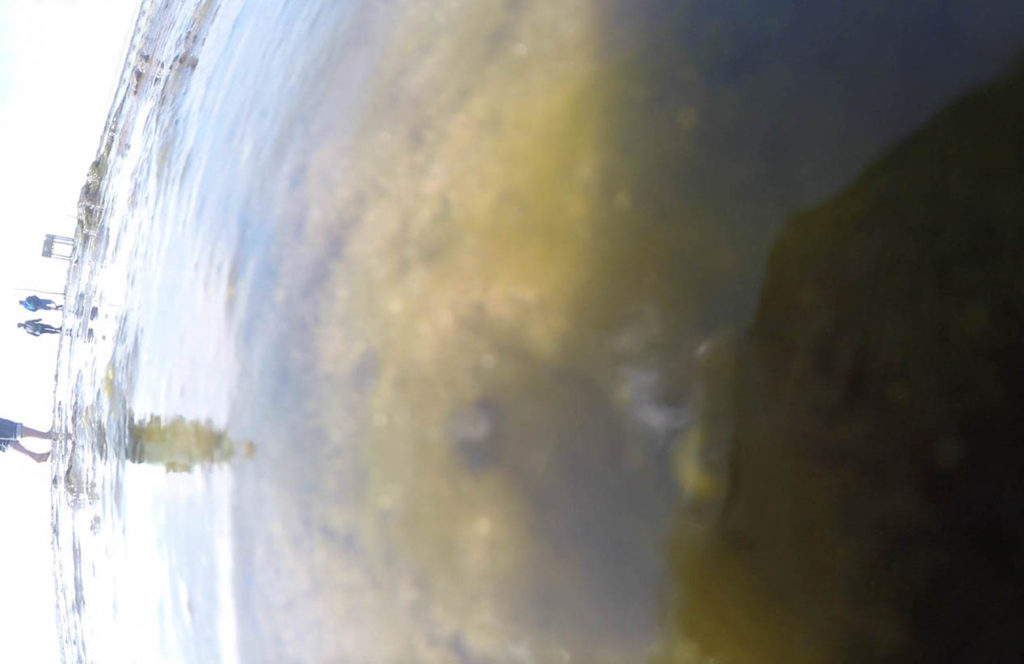
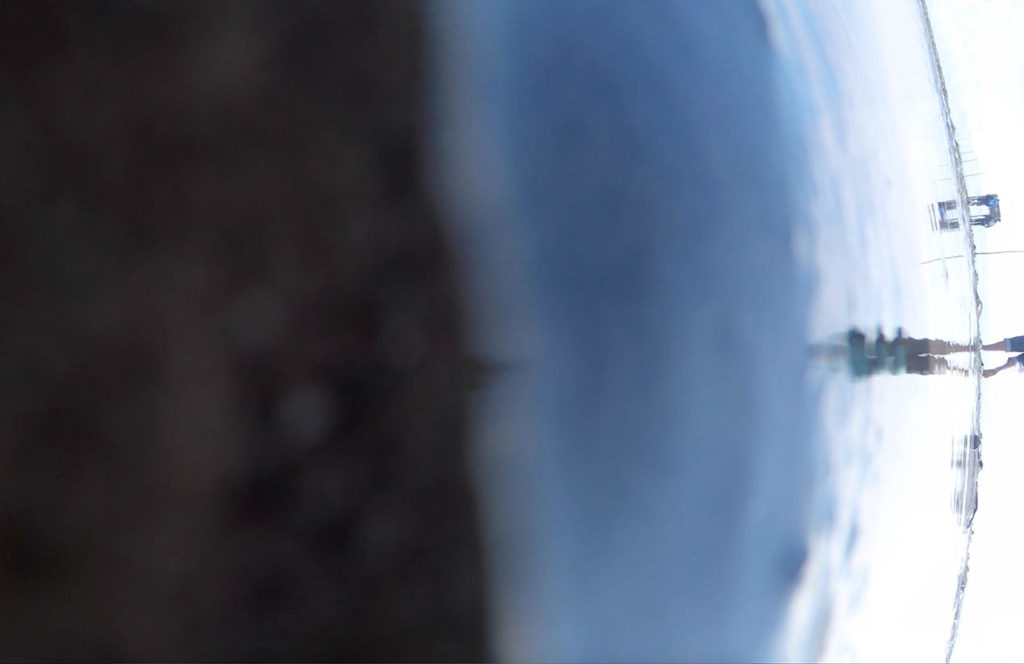
Crawling with things on my back is a playful way of muddling everything up, I am purposefully disrupting, destabilising, disorganising and reorganising the hierarchy, status and role of us all, we all go upside down.
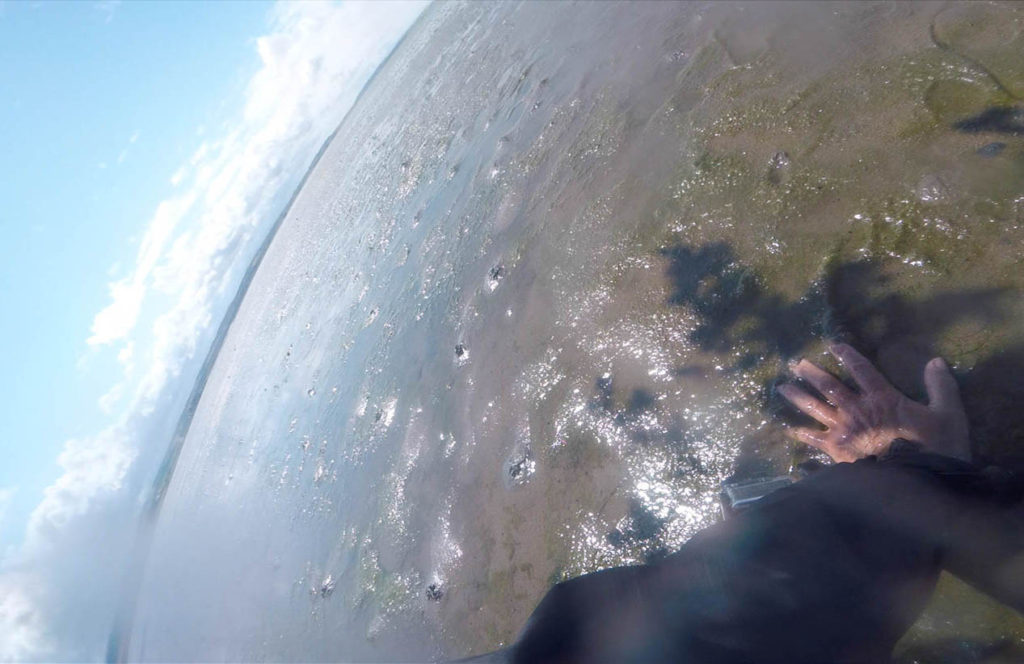
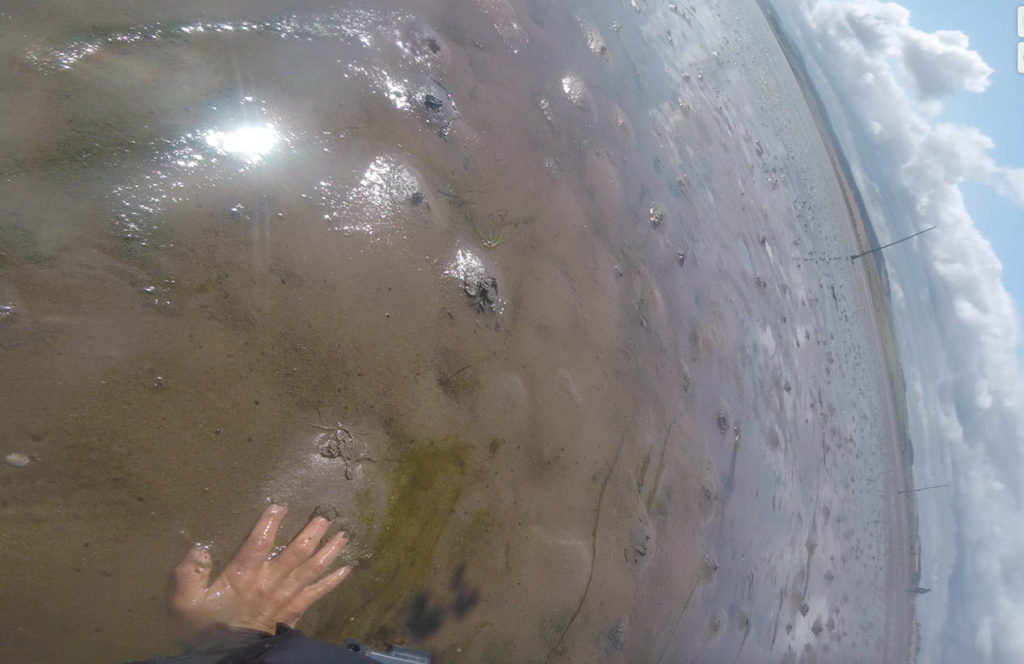
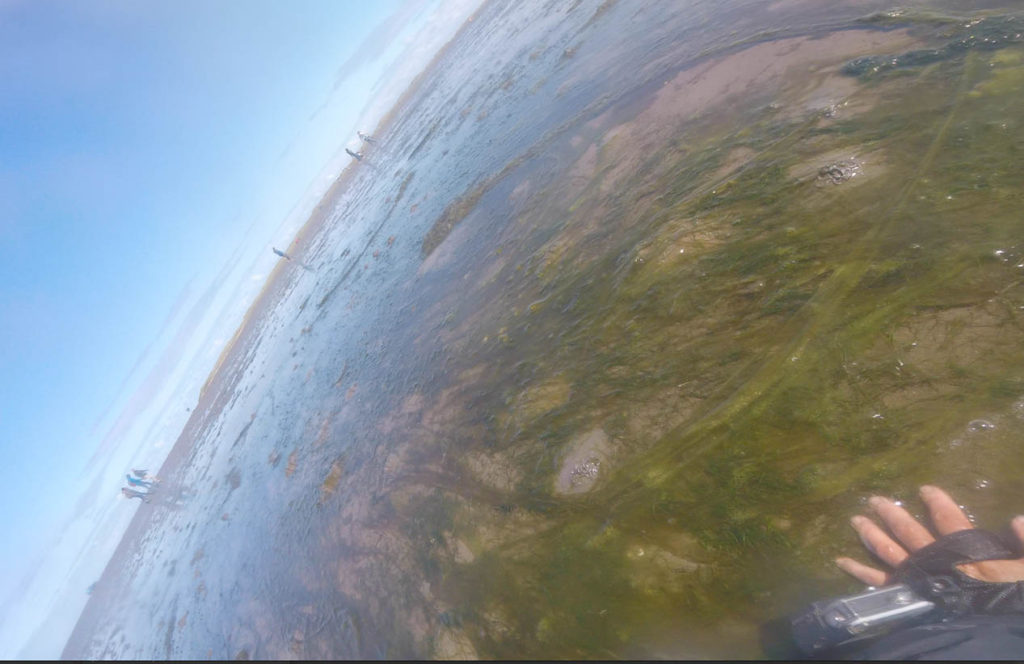
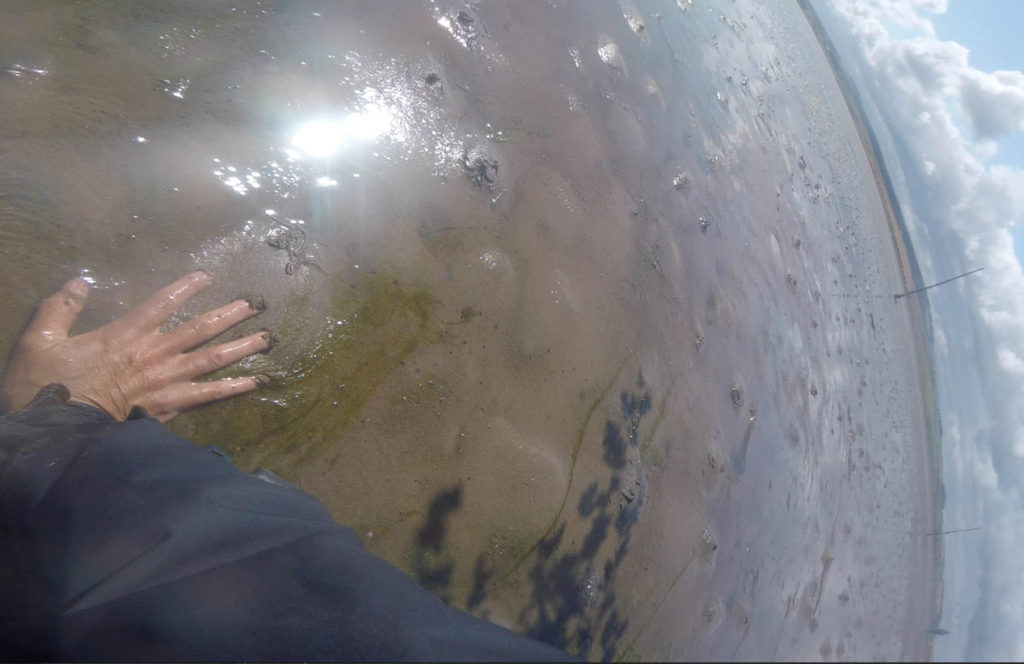
I stop to nibble the salty samphire.
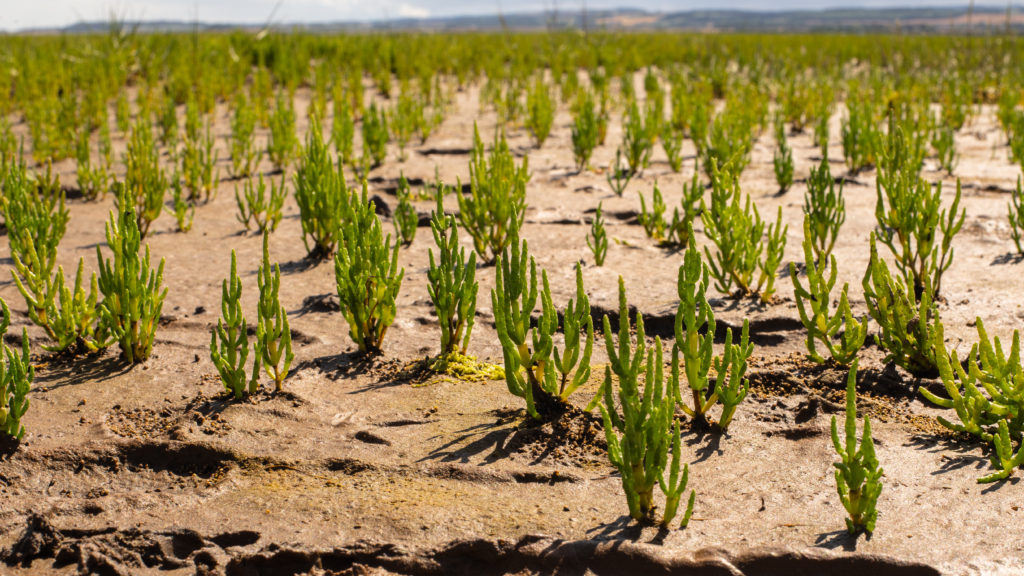
I stop to touch the eel grass… the eel grass feels itself touching me.
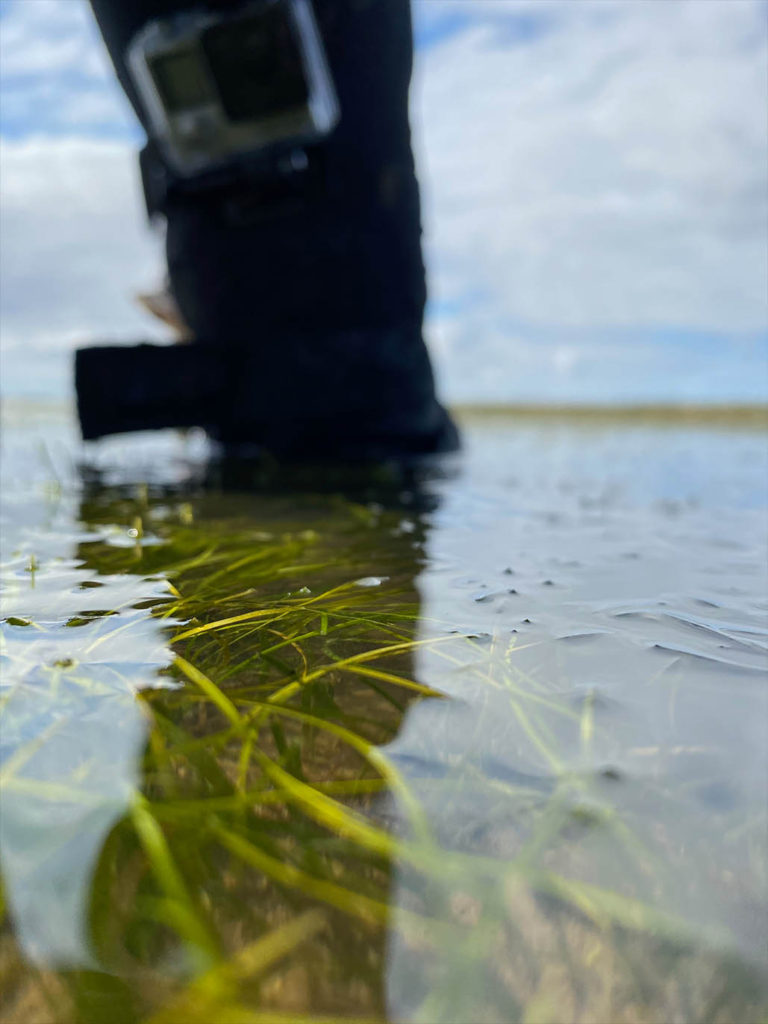
How can we develop a more mutually beneficial, sustainable, equal and respectful relationship with our plant (tree) and animal others
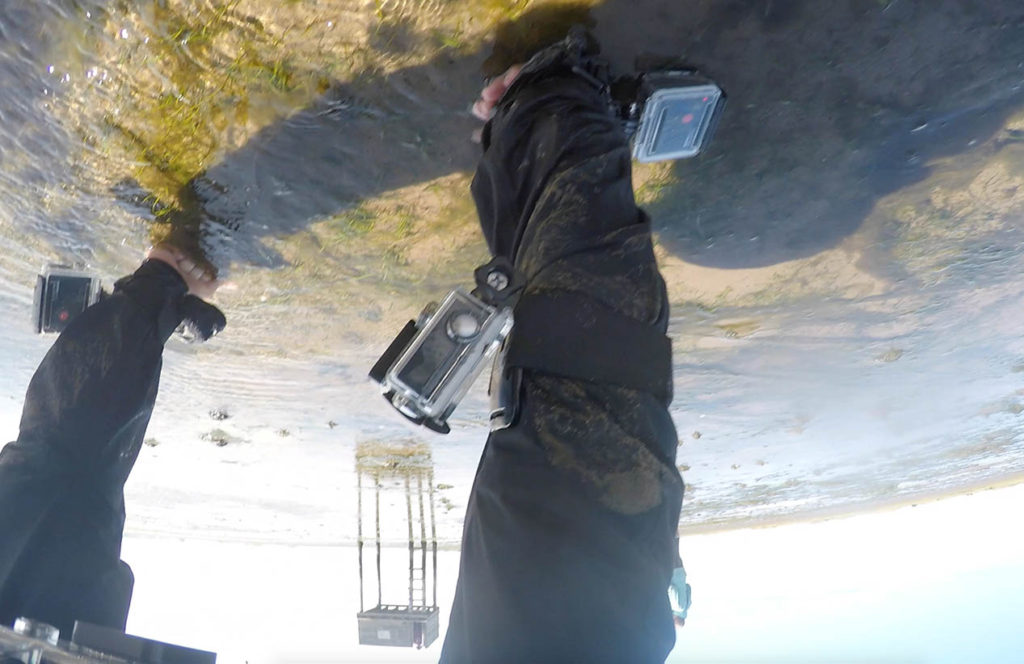
What if we see a tree not as our commodity, our welfare and our wellbeing, not as our saviour, our currency, our excuse, not as our judge, conscience or our carbon off-set, sink or bin, but as our equal, as a sentient being with a history, a land, and a community, with rights, legitimacy and a voice.
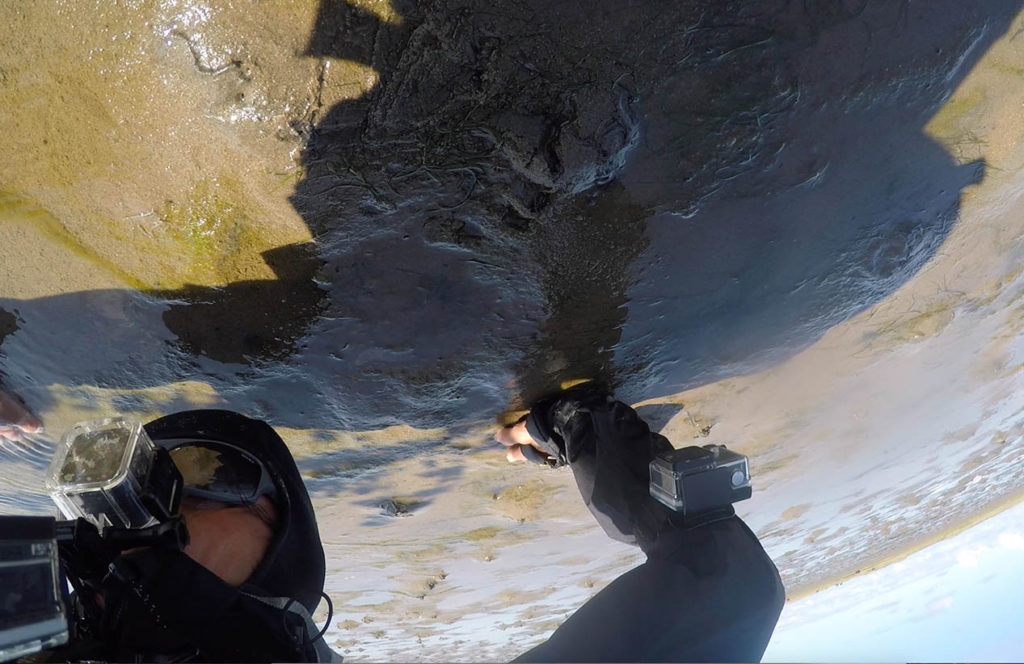
This tree now planted, when mature will provide fruit in autumn for the islands resident and migratory birds, specifically the Thrushes, Waxwings and Yellow Hammers. The islands coastal, mud and sand flats, sand dunes, salt marshes and grasslands are habitat to 312 species of birds.
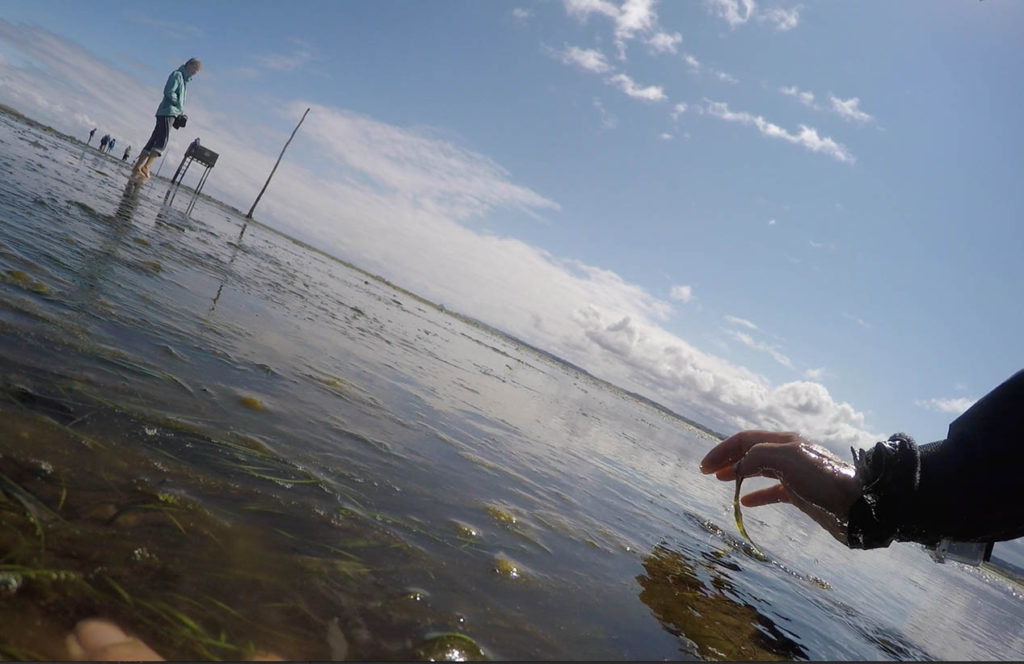
In her book The Living Mountain, Nan Shepherd writes “Lay the head down, or better still, face away from what you look at, and bend with straddled legs till you see your world upside down. How new it has become!” “This is how the world must see itself” says Shepherd.
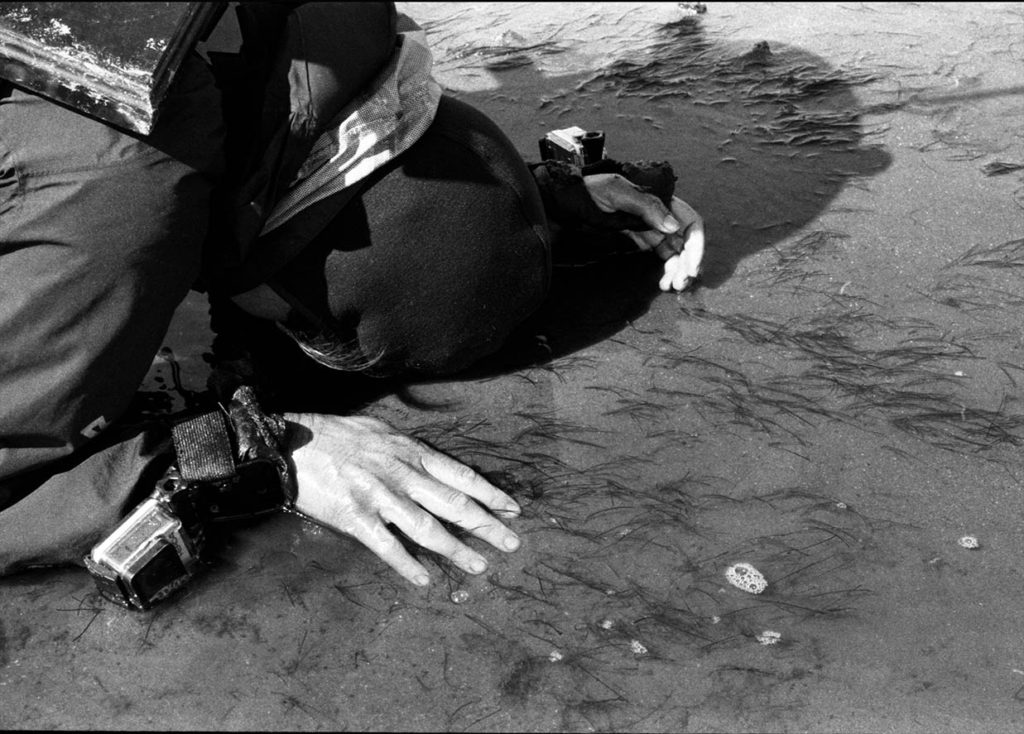
In Robert Macfarlane’s preface to The Living Mountain he writes ” Her Book is a hymn to ‘living all the way through’: to touching, tasting, smelling and hearing the world.
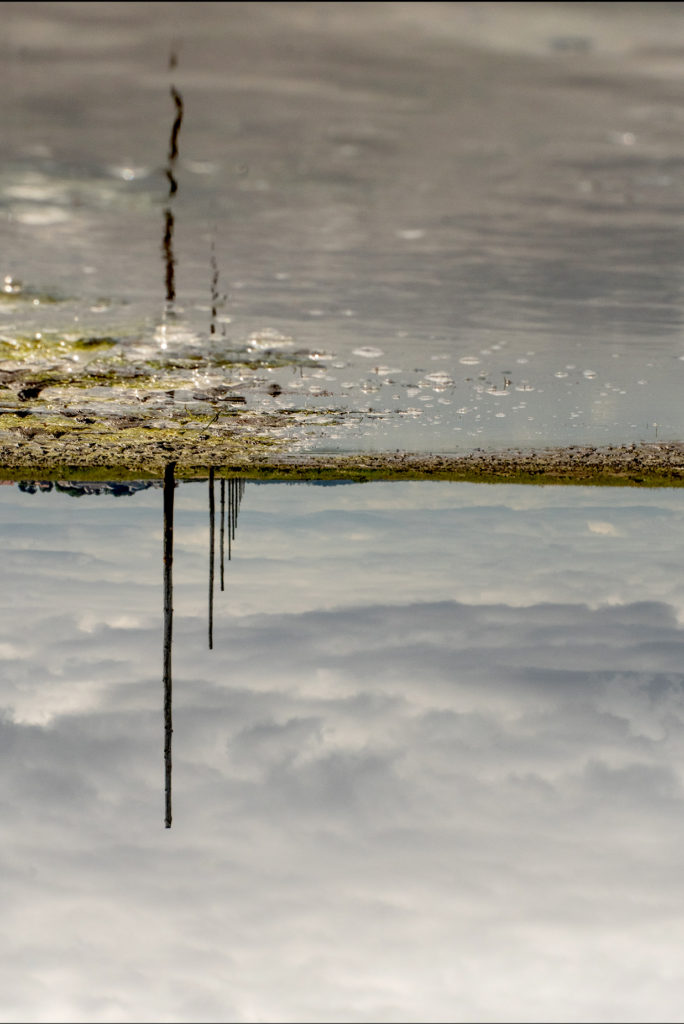
If you manage this, then you might walk ‘out of the body and into the mountain’, such that you become briefly, ‘a stone..the soil of the earth’.
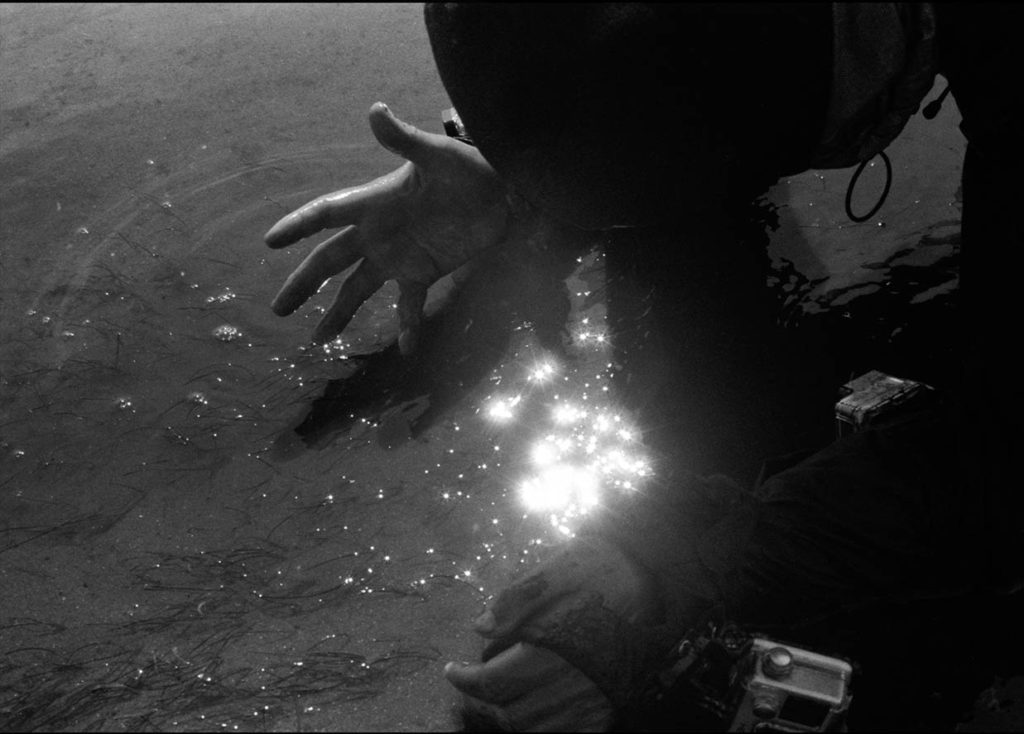
And at that point then, well, then ‘one has been in’. ‘That is all’, writes Shepherd, but that ‘all’ should be heard not diminutively, apologetically, but expansively, vastly”
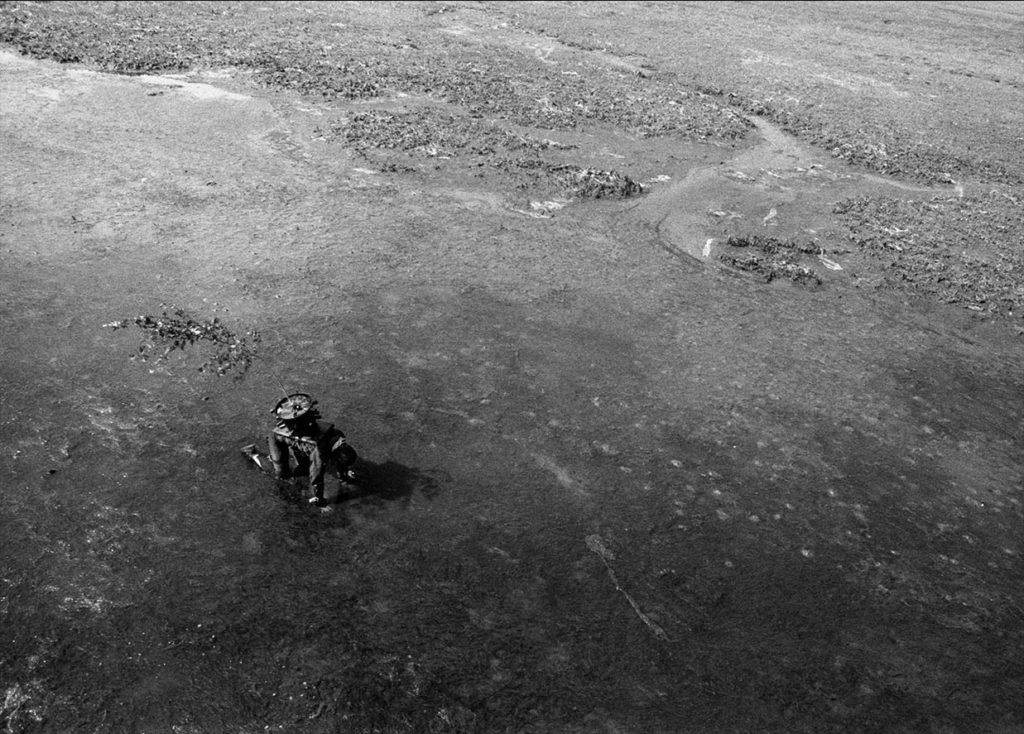
I slip and slide deliciously, greedily into deep carbon blackness
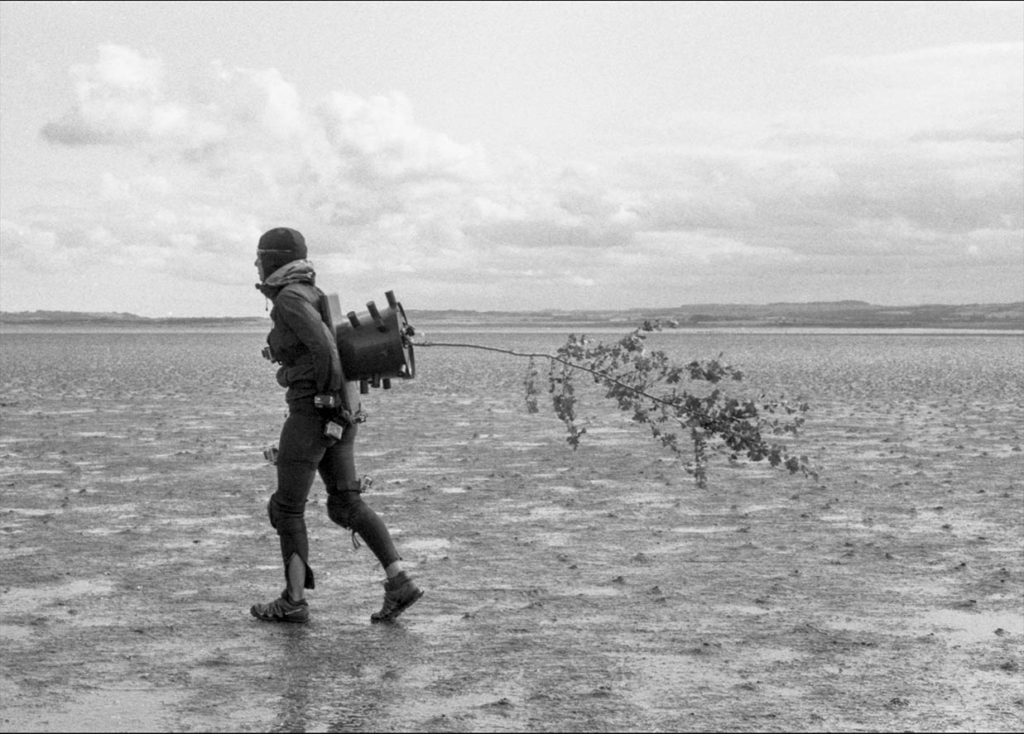
It doesn’t matter that I didn’t crawl to the end, what matters is that I went ‘in’ and achieved what Shepherd calls an “accession of interiority”, that I left the outer world of materiality to reach the inner landscape of the spirit. Like Shepherd, I know that ‘going in’ is really ‘going out’.
Colour photos by Jenny Goodfellow, Black and White photos by Arlo Brown and GoPro film stills by my body.